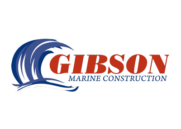It’s been a record 10 years since the state of Florida has suffered a direct hit from a major hurricane. The state’s official hurricane season started on June 1, and with months to go until the season officially ends on November 30, there’s no better time than now to learn how to prepare your waterfront property for a potential tropical storm or hurricane.
Florida possesses some of the nation’s greatest beaches, beautiful waterways, and excellent offshore fishing. The past decade of relative calm on both coasts and a population growth throughout the state of 2.5 million new residents means that many of the state’s boaters are either rusty or inexperienced altogether in preparing for a storm. In order to protect your boat, dock, and boat lift, keep these tips in mind as hurricane season continues.
Preparing Your Boat
Assuming you have enough warning and the time to do so, the best course of action you can take with your boat is to remove it from your boat lift and store it away from the potential storm surge in a safe place. If you cannot remove your boat, raise the dock lift as high as you can in an attempt to keep the boat above the storm surge, and don’t forget to secure your boat to the lift. Also, remove plugs from your boat so water can drain out and not overload your lift.
If you cannot remove your boat and your boat lift’s cradle doesn’t rise high enough to keep it above the potential storm surge, there are extra steps to take. It is still advisable to raise your boat as high as the boat lift goes, secure your boat to the lift, and use long ropes to secure your boat to anchor points. Even if the storm surge lifts your boat off the boat lift, the long anchor ropes will help keep it near your property.
Preparing Your Boat Lift
For those who were able to remove the boat from the boat lift, the best course of action during preparation is to lower the cradle on the lift all the way to the bottom. Leaving the cradle in the water prevents it from swaying the winds or being lashed harshly by waves in a storm surge, thus protecting the lift itself and the dock.
If your boat lift has a low-profile installation, it is possible the tide surge could bring corrosive saltwater right into your boat lift motors, switches, and covers. Remove these items from your lift and store in a safe, dry place. Those with a sealed direct-drive system should remove the gear unit as well. Before you do though, lower the cable down to its lowest point as the cable will free spool back down regardless. Last but not least, tighten all the nuts and bolts on the lift so you don’t lose any small parts during a potential storm.
Saltwater that streams in during the storm surge collects inside your sealed housing and freezes up the gears, and can result in costly replacement and repair costs to get your boat lift operating smoothly again after the storm. Follow these steps in the event that the state’s decade-long winning streak ends this year, and you’ll be prepared to weather the storm!

